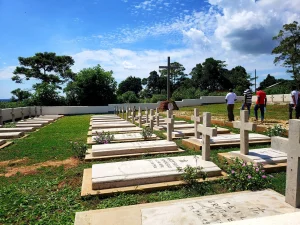Stationed on the edges of the tropical Budongo forest in Nyabyeya village, 35km from Masindi town, is a 78-year-old Catholic Church.
Inside the church is an icon of Our Lady of Częstochowa hanging above the altar and paintings of stations of the way of the Cross with Polish inscriptions on the walls.
A quick tour around the church brings questions to mind, like, Who built this church? What is the history behind it? Why are there so many Polish inscriptions all over it?
The church was built between 1943 and 1945 by Polish refugees who had fled Poland because of World War II. In 1939, 2000 Polish women, children and elderly men arrived in Masindi. The number had risen to 3,200 by 1944, of whom 1,528 were children and only 267 men, most of whom were either old or unwell. Healthy men were away at war.
While here, the Poles started praying under trees and on hills due to the lack of a proper church. This made them think of building their own church in honour of the Blessed Virgin Mary. Amazingly, this piece of architecture, which still stands strong today, was built almost entirely by women; the elderly men only gave advice.
Unknown to many, the Polish Catholic Church in Nyabyeya, Masindi, is a cradle of religion and history and a symbol of Uganda’s open-door refugee policy.
Nyabyeya Church is a heritage site, and visitors are frequently amazed to learn how the area was once home to a community of Poles. The church now takes the name ‘Our Lady Queen of Poland Catholic Church’.
Adjacent to the church is a cemetery with 60 graves for Polish nationals, which is enclosed in a low fence with a small gate and a plaque with inscriptions in Polish that translate: “Let us pray for the deceased Poles, 1939–1947.”
To this day, descendants of the Poles who once called Nyabyeya home still visit the site. Those whose forefathers lay beneath the white graves visit the cemetery and perform rituals like lighting candles. These numbers are a great addition to the foreign tourists who jet into Uganda every year.
Uganda’s interaction with refugees is as old as time and this site is a sign of its history of indiscriminately welcoming people fleeing war in their home countries.
Historic & religious sites attract a large number of tourists to Uganda every year, which has been one of the factors in the growth of the tourism industry in the country.

